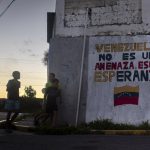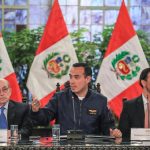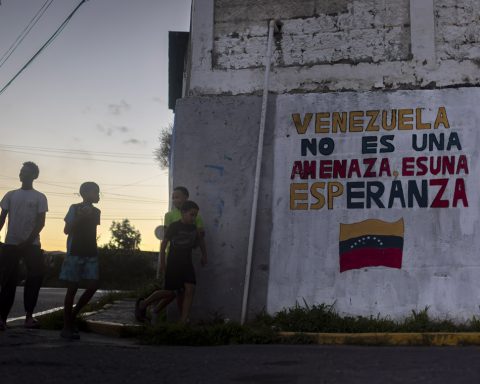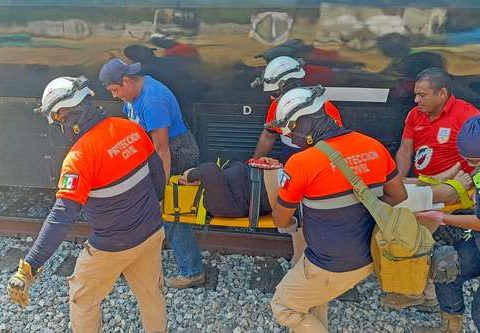This popular decision mechanism is endorsed by the Article 79 of the Constitution of the Republicwhich indicates that “Twenty-five percent of the total number of registered voters entitled to vote, may file, within the year of its enactment, the appeal for a referendum against the laws and exercise the right of initiative before the Legislative Power.”
The National Pro Referendum Commissionmade up of the PIT-CNT, the Broad Front and other social organizations, delivered 797,261 signatures to the Electoral Court on July 8, 2021last day enabled to take the LUC to a referendum, surpassing the 672 thousand necessary signatures that correspond to 25% of the electoral register.
Vote
Voting will take place between 8:00 a.m. and 7:30 p.m.. the vote is secret and obligatoryand the document that enables to pay is the civic credential. All persons included in the electoral register must vote, without age limit.
José Garchitorena, minister of the Electoral Court, explained in an interview with Doble Click (Del Sol) that persons with disabilities who have been designated to a non-accessible circuit will be able to vote in any accessible circuit. Before, they could only do it in the circuit with the closest accessibility in the standard. That vote will classify as observed.
Those who may also vote outside their circuit are those who belong to a rural circuit. That is, if the person belongs to a rural circuit, they can vote in any other of the same nature (within the same department) as long as they prove they belong to their circuit.
If the intention is to repeal the 135 articles, it must be placed in the envelope that is delivered to the circuit the pink ballot what does it say “I vote Yes for the referendum appeal against 135 articles of Law No. 19,889 of July 9, 2020”.
If you want to keep the articles, you must place the ballot sky blue color what does it say “I vote NO to the referendum appeal against 135 articles of Law No. 19,889 of July 9, 2020”.
In both cases, the phrases are under the Uruguayan national coat of arms, the body “Electoral Court”, and the “República Oriental del Uruguay”. At the end of the ballot is the date of the referendum, “March 27, 2022”.
Blank or null
There is the option to vote in whiteimplying do not place any ballot paper or any foreign object in the envelope alone. In the case of the act of referendum, the blank vote is valid and counts as a vote not to repeal the 135 articlesnamely, for the No. The Yes, to prevail, must get 50% plus one of the valid votes or, in other words, beat the No and the blank votes added together.
The only non-validated votes are those that are considered as “annulled votes” and do not go for any of the options. For this to happen, you must place in the envelope: ballot sheets of the two options together, ballot papers inserted together with foreign objects, damaged ballot papers, or more than three identical ballot sheets together.
An error on the ballot (for example, missing the date below) may be considered a misprint or an invalid voteGarchitorena explained to Doble Click. The members of the circuit They will interpret what corresponds in each caseand each decision can end up being challenged and sent to the departmental Electoral Board to analyze the situation.
The fine
Whoever does not go to vote must pay a fine of 1 UR (Readjustable Unit), which at February’s value is at $1,428.01. In case of being public official or university professionalthe fine becomes 2 UR, a cost of $2,856.02.
The economic sanction can be paid through the website of the Electoral Court from Tuesday, March 29and from that date also not having gone to vote can be justified by the same medium.
The valid reasons to justify not having voted are: reasons of force majeure, medical reasons, or being out of the country on election day.
In the case of medical reasons, Garchitorena indicated that a medical certificate can be delivered, but it must have a professional stamp. The electoral boards of each department are responsible for analyzing these cases.
Scrutiny
At 7:30 p.m. the voting tables close and the primary scrutiny. The members of the circuits they open envelope by envelope and count the votes, with a tablet in which they process and send all the information to the Court, detailed Garchitorena.
The minister of the Electoral Court foresees that on Sunday night the primary results are already publicalthough that depends on the speed with which the circuits process the information, and whether the result is “tight or not”.
On Tuesday, March 29, the final count will begin, which will be carried out by each department. Garchitorena said that in this part of the process the polls are reopened and the information is verified. “If everything is fine, the votes are not counted”he added.













